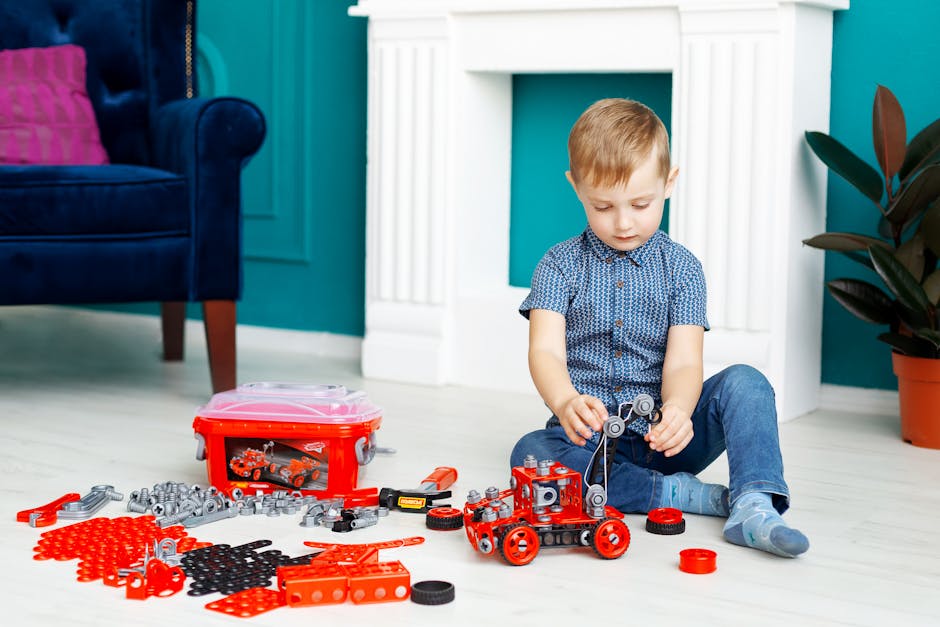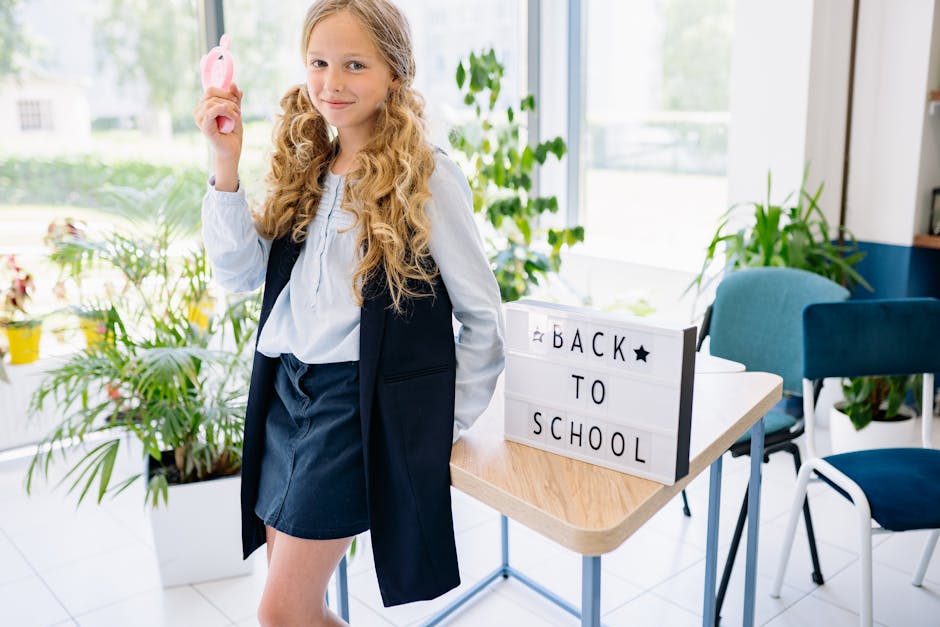Why Cognitive Development Matters
Cognitive development is the way a child builds up the mental tools they’ll use for life—things like thinking, learning, remembering, and solving problems. It’s not just about IQ or grades. It’s about how a kid makes sense of their world, from recognizing faces and following routines, to asking questions and generating their own ideas.
These brain skills impact everything: language, focus, memory, decision-making. A strong cognitive base helps kids listen better, communicate clearly, solve puzzles, and adapt to new challenges without falling apart.
The catch? Timing matters. Brains build fast in early childhood, forming connections that shape attention, behavior, and learning habits. The earlier kids get the right mental stimulation, the sturdier and more flexible their foundation will be. It’s like pouring the base of a house—solid form now saves a lot of patchwork later on.
Everyday Activities That Boost Brain Power
Reading aloud: Simple, powerful, and often overlooked. Reading aloud builds vocabulary faster than passive listening or screen exposure. It helps kids hear sentence structure, pick up new words, and connect meaning with emotion. Make it a habit—ten minutes a day can do a lot. Let them ask questions, guess what happens next, or repeat their favorite pages. That back-and-forth talk is where the gold is.
Puzzles & logic games: These aren’t just rainy-day fillers—they train spatial skills, patience, and pattern recognition. Young kids start with chunky shape sorters; older ones can handle jigsaws, Sudoku, or even basic chess. The idea is to get their brain solving problems without direct instruction. Let them struggle a bit. That’s when learning kicks in.
Music and rhythm play: No, your child doesn’t need to be a prodigy with a violin. But clapping to a beat, singing simple songs, or tapping rhythms builds memory, sequencing, and auditory processing. Repetition through music cements information differently—and more deeply—than plain talk.
Free play: This still matters. Structured activities have their place, but unstructured time lets imagination stretch its legs. Pretend play, building forts, or creating wild backstories with action figures give the brain room to invent and explore. It’s problem-solving in disguise.
Conversation routines: It’s not just what you say to your child, it’s how often you engage. Small, daily back-and-forth chats wire the brain for language and reasoning. Interactive moments like “What do you think happens next?” or “Why do you think that dog barked?” encourage articulation, curiosity, and critical thinking. Don’t overthink it—just keep talking, and let them talk back.
Screen Time That Counts (Yes, It Exists)
Not all apps are digital junk food. The right educational apps can help kids sharpen memory, focus, decision-making, and problem-solving skills—if you know what to look for. The key is finding tools that prompt interaction and encourage thought, not just passive screen swiping.
Look for apps that:
- Ask kids to solve problems, not just identify shapes
- Adapt to skill level with increasing challenges
- Mix visuals and sound thoughtfully, without overstimulation
- Build language, math, or logic in small, trackable steps
A few solid examples? Think Khan Academy Kids, Moose Math, or Endless Alphabet—tools designed with child development in mind, not endless in-app purchases.
That said, digital learning only helps when it’s used wisely. Set clear time blocks (20–30 minutes), pair screen time with off-screen conversations, and avoid handing devices over on autopilot. Co-view when you can.
The easiest litmus test: Does the app spark questions? If your child’s talking, thinking, or trying again, that screen time is probably working. If not, it’s time to delete.
Smart Tools & Toys That Actually Help
Not all toys are worth your shelf space. The right ones pull their weight, sharpening young minds while keeping things fun and hands-on.
Start with stacking toys. These build more than just towers—they fine-tune hand-eye coordination, shape recognition, and basic problem-solving. Whether it’s wooden blocks or interlocking rings, the act of balancing and sequencing pushes kids to think while they play.
Flashcards and matching games are another reliable pick. These tools speed up memory and recall, especially when introducing new words, symbols, or categories. The key is repetition with variation—same cards, new ways to match, and always at a child’s pace.
Don’t overlook interactive books or tactile learning kits. Anything that invites a child to poke, flip, touch, or respond helps lock in concepts. Think lift-the-flap books or felt boards that pair scenes with storytelling. When physical engagement meets story structure, brain connections multiply.
Then there’s digital. While screen time gets a bad rap, some tools do pull their weight—if they prioritize thinking over tapping. Apps that require pattern recognition, decision-making, or step-by-step logic can serve as solid cognitive workouts. Look for interaction that builds, not distracts. If it feels like a short attention loop, skip it.
Cognitive Growth by Age Stage
Toddlers (1–3)
At this stage, everything is trial and error—and that’s the point. Activities that show cause and effect are gold. Think: stacking blocks and knocking them down, pushing buttons to hear sounds, dropping objects to see what happens. Naming objects during play builds recognition and language. Simple sorting—by shape, color, or size—also sets the groundwork for early problem-solving. Toddlers don’t need fancy tools. They need repetition, patience, and clear reactions from their environment.
Preschoolers (3–5)
Here’s where you can lean into the power of narrative. Storytelling helps preschoolers string events together and understand cause and effect in a more abstract way. You don’t need a script—just build a story as you play. Memory games (like matching cards or “find the hidden cup”) sharpen recall skills. Introduce low-stakes problem-solving too, using puzzles or building materials with a specific goal (like building a bridge or a house). Keep things hands-on and open-ended so kids can experiment and learn by doing.
Early Elementary (6–8)
Now it’s time to layer in logic. Kids at this age are ready for tools that challenge them to think multiple steps ahead—whether that’s through board games, STEM kits, or craft projects with instructions. Time-based challenges (like setting a timer while they clean up or race to solve a riddle) build focus and executive function. Group strategy games teach collaboration, decision-making, and flexibility. It’s less about the toy or the task and more about what the activity asks their brain to do.
Setting Up a Development-Friendly Environment
Flexibility within structure—that’s the sweet spot. Kids thrive when they know what’s coming, but overloading their day with back-to-back activities? That just burns them out. Keep a rhythm: time to play, time to eat, time to rest. But let them roam within those blocks. Open-ended routines give the brain room to stretch.
When it comes to toys, less is truly more. A set of wooden blocks, a puzzle, a few sensory items—they leave space for imagination and problem-solving. Flashy gadgets often do the thinking for them. Minimalist toys demand focus, creativity, and persistence. That’s what builds lasting neural connections.
Environment matters too. Kids need areas that stir up their senses as a package deal. Set up spaces where they can hear textures (think soft music or nature sounds), touch different surfaces, and absorb colors or patterns. The goal isn’t overstimulation—it’s layered stimulation. Smooth transitions between sensory experiences help with emotional regulation and mental flexibility.
Finally, kids watch more than they listen. If you’re curious, they will be too. So wonder out loud. Ask simple questions about shadows, bugs, or how the sink works. Pause with them. Reflect with them. In those moments, you’re not just teaching—you’re building how they think.
Final Tips for Parents & Caregivers
Consistency isn’t just comforting—it’s powerful. Kids thrive when routines are in place. Regular story time, puzzle breaks, even consistent mealtime talk—it all teaches the brain there’s a rhythm to how learning unfolds. No need to turn your home into a classroom, just stick to habits that invite thinking and questioning.
Don’t overcomplicate it. Focus on one major cognitive activity at a time. If today’s about storytelling, let that be the core. If it’s a puzzle day, let them get absorbed. Overloading the day stacks stress—not skills.
And remember—how your child gets there matters more than how fast. Celebrate their process. Did they rethink a solution? Stick with it for a while? That’s the win. These moments build resilience and sharpen problem-solving.
Finally, tune into what lights them up. A child exploring something they actually care about digests more, stays longer, and grows faster. Watch, listen, follow their lead. Learning isn’t forced—it’s followed.
Want More Resources?
If you’re looking to go deeper, Mom Smart Hub has your back. It’s not about fluff—it’s a practical space built for parents who care deeply but don’t have time to sift through outdated advice.
From expert interviews that break complex ideas down into simple actions, to real-life stories from other parents figuring it out as they go, the platform offers a clear path. You’ll find curated guides on child development, updated tools by age group, and honest routines that work in non-perfect households.
Whether you’re starting fresh or tweaking what’s already working, use it as your home base when raising kids who are curious, capable, and confident.


